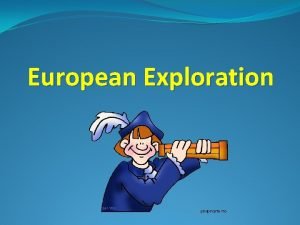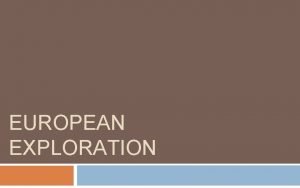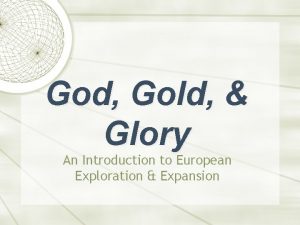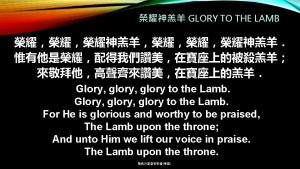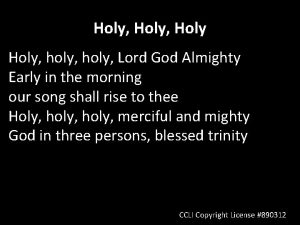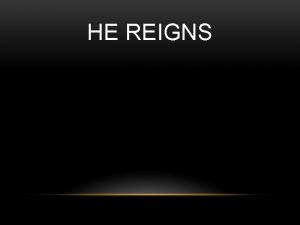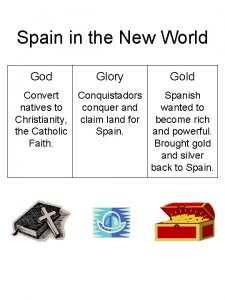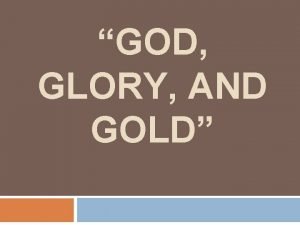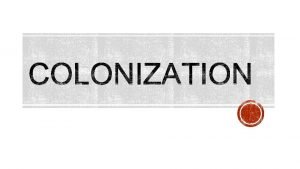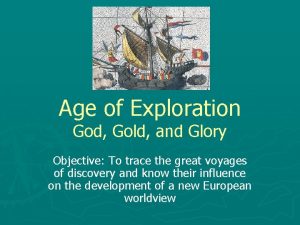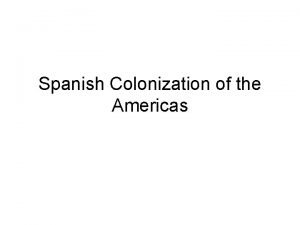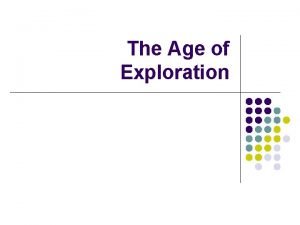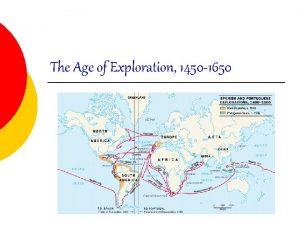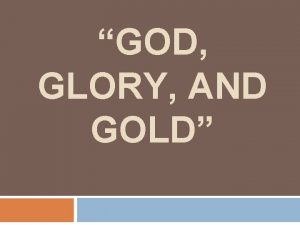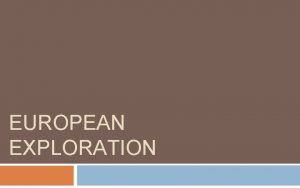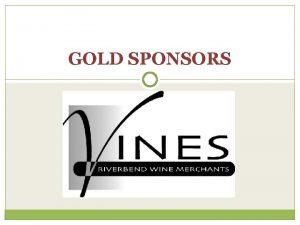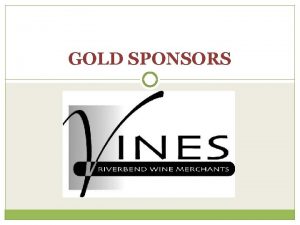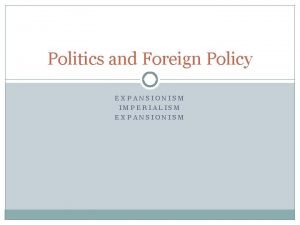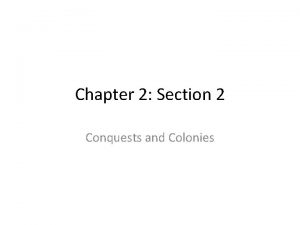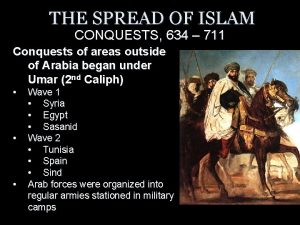Exploration and Expansionism Conquests God Glory and Gold














- Slides: 14

Exploration and Expansionism Conquests

“God, Glory and Gold” Gold=wealth • New spices in Europe (introduced during the Crusades) = Increased demand for spices Muslims sold spices to Italians for lots of $$ Italians sell it to Europe for more $$$ • Europeans wanted to “cut out the middle man” • Europeans decide to explore to find new trade routes to gain new sources of wealth Europe buys it for a high price

God (Spreading Christianity) • After the Reformation of the Church, believers of Christianity felt the need to spread their religion to gain more popularity • It was almost like a “race to spread” their religion –an idea that came from the Crusades—wanting to stop the spread of Islam • Hernan Cortes believed it was his duty to introduce “the holy Catholic faith” to natives who were seen as “less advanced”

Glory Being the FIRST: • To find spices • Find trade routes • Find new land • Control a country • To create trade ports

GOLD GLORY * After reformation period, Roman Catholic Church desired to spread their message * During the Crusades, Europeans had a taste for Eastern goods and spices * Seeking adventure and escape from boring farming lifestyle * Most conquistadors * Trade was had missionary extremely profitable priests or monks (Diaz) * Bring fame to the individual (family) and their mother country/Empire Bring “salvation to savages” and “to bring light to those who were in darkness” * A sea route to East Indies/India would bypass Arab control * Make a name for yourself (like Marco Polo) * Refugees seeking religious freedom * Secular viewpoint increased people’s desire for material possessions * New secular viewpoint increased people’s curiosity about worldly matters Motives for European Exploration GOD

Technology Helps… Introduction of the Caravel made travel easier • Created by Portuguese in late 1400 s • 65 feet long = more space for people and food • Able to explore closer to shore, more maneuverable • Larger sails for easier movement and power

Christopher Colombus (1451 -1506) • he completed four voyages across the Atlantic Ocean that led to general European awareness of the American continents • Those voyages, initiated the process of Spanish colonization, • which foreshadowed the general European colonization of the "New World".

Explain why the Columbian Exchange” could be considered the tsunami of unintentional “bio-terrorism”

The Columbian Exchange • Avocado • • Squash Turkey Cocoa Peanut • • • Pumpkin • • Pineapple • • Tomato • • Syphilis • • Sweet Potatoes Quinine Potato Maize Peppers Tobacco Cassava Vanilla Tuberculosis • Trinkets • Liquor • Guns • • Olive Onion Grape Citrus Fruits Cattle Flu Diphtheria • • Coffee Bean Turnip Peach Pear Sheep Typhus Whooping cough • • Banana • • Honeybee • • Sugar cane • • Wheat • • Pigs • • measles Rice Barley Oats Horse Smallpox Malaria

Cycle of Conquest and Colonization Explorers Conquistadors Missionaries Permanent Settlers Official European Colony!

Exchange of products, resources, and diseases BETWEEN the Old World (Europe, Asia, Africa) and the New World (Americas) Columbian Exchan 1) A shortage of labor to grow cash crops led to the use of African slaves 2) Slavery based on race 3) Slaves needed for sugar plantations in South America and the Caribbean

Triangle Trade European Manufactured Goods (Guns, cloth, etc) From Europe TO Africa From Americas TO Europe Middle Passage Raw Materials (tobacco, molasses, sugar, cotton) Traded for Slaves in Africa (approximately 20 million) From Africa TO Americas

Trans-Atlantic Slave Trade

The Slave Trade 1) Existed in Africa BEFORE the coming of the Europeans 2) Portuguese replaced European slaves with Africans • Sugar cane and sugar plantations • First boatload of African slaves brought by the Spanish in 1518 • 275, 000 enslaved Africans exported to other countries 3) Between 16 th century and 19 th century about 10 million Africans shipped to the Americas
 The 3 gs
The 3 gs God gold and glory motivations for the age of exploration
God gold and glory motivations for the age of exploration Explain god gold and glory
Explain god gold and glory 榮耀神羔羊
榮耀神羔羊 Glory glory oh god almighty
Glory glory oh god almighty Glory glory hallelujah he reigns
Glory glory hallelujah he reigns God gold glory spanish philippines
God gold glory spanish philippines Early explorers navigation tools
Early explorers navigation tools God gold and glory cartoon
God gold and glory cartoon Glory age of exploration
Glory age of exploration God gold glory spanish
God gold glory spanish Ferdinand magellan god gold glory
Ferdinand magellan god gold glory What did amerigo vespucci discover
What did amerigo vespucci discover God gold glory drawing
God gold glory drawing Expansionism cold war
Expansionism cold war
